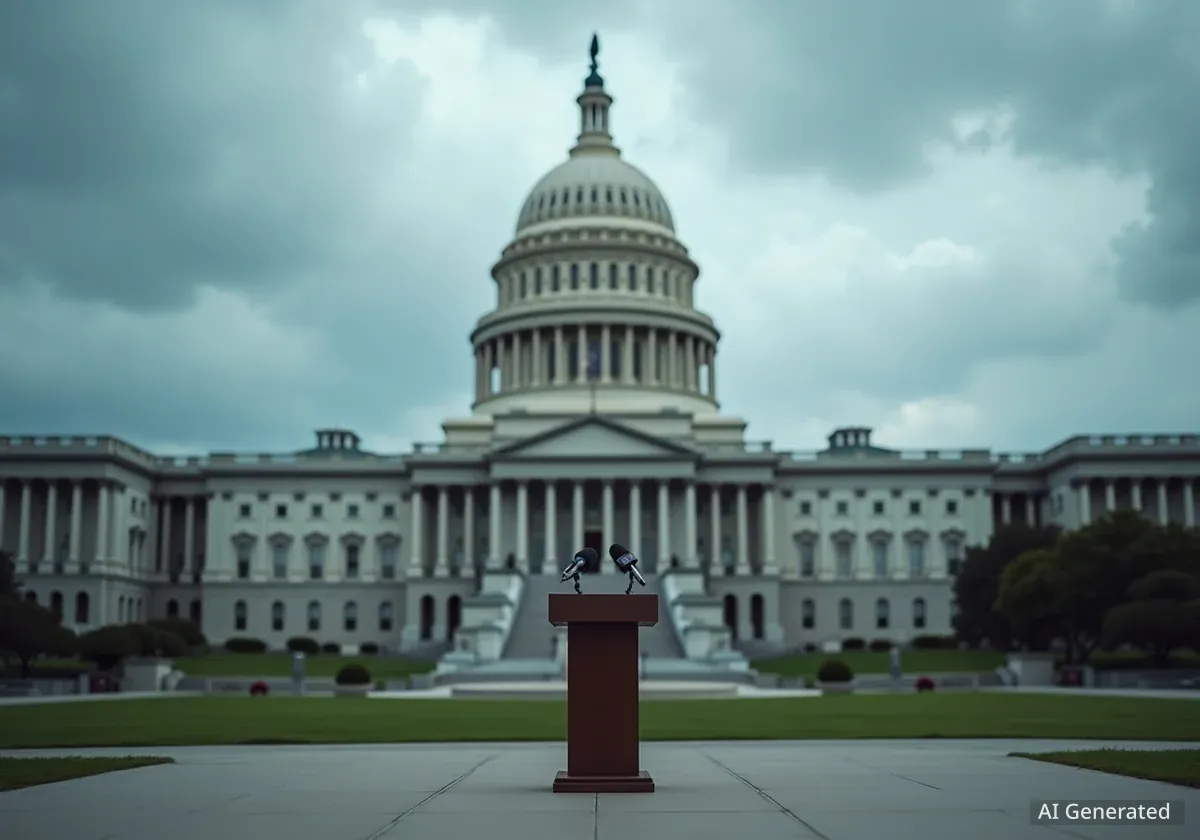Following the death of a prominent public figure, a rapid process often begins online, transforming their memory into an idealized, near-sacred image. This phenomenon, amplified by social media and artificial intelligence, sees complex individuals reframed as martyrs or saints, a trend observed following the recent death of conservative activist Charlie Kirk.
Within hours of his death, AI-generated images depicting Kirk with religious figures and symbols spread across digital platforms. This modern form of remembrance highlights a long-standing societal practice of elevating deceased leaders, which sociologists refer to as the sacralization of politics. This process shapes public memory and can have significant effects on political discourse.
Key Takeaways
- The death of public figures often triggers a process of "hagiography," where their legacy is simplified and idealized, portraying them as saints or martyrs.
- Digital technology, including social media and AI, has dramatically accelerated this process, allowing for the rapid creation and distribution of memorial content.
- Historical figures like Abraham Lincoln and Martin Luther King Jr. underwent similar transformations over decades; today, it happens in hours for figures like Kobe Bryant or Charlie Kirk.
- This idealization serves to unify supporters and frame political struggles in moral or sacred terms, but it can also stifle critical discussion and deepen polarization.
The Historical Pattern of Political Sainthood
The practice of elevating deceased leaders into revered symbols is not a new phenomenon. It has deep roots in American history, serving to unify the public, provide moral clarity during times of crisis, and solidify political legacies. This process often involves simplifying complex histories to create a more universally acceptable narrative.
From Presidents to Activists
Abraham Lincoln's image, for example, was transformed after his assassination. He became a symbol of national unity and moral sacrifice, a perception reinforced by monuments like the Lincoln Memorial, which is designed to resemble a Greek temple. His political complexities were often smoothed over in favor of a more mythic portrayal.
Similarly, John F. Kennedy's assassination led to his elevation as a symbol of youthful promise and lost potential. For decades, his portrait was a common sight in American homes, often placed near religious icons, blending civic reverence with spiritual devotion.
Selective Memory in Public Commemoration
The legacies of figures from both sides of the political spectrum are often selectively remembered. Ronald Reagan is frequently celebrated by conservatives as a champion of free markets, with less emphasis on the Iran-Contra scandal. Likewise, mainstream remembrances of Martin Luther King Jr. often focus on his message of unity while downplaying his more radical critiques of capitalism and militarism.
This pattern shows how public memory is constructed. The goal is often to create a unifying symbol that a political movement can rally around, even if it means overlooking controversial aspects of a person's life or work.
Digital Technology as an Accelerator
While the creation of political saints once took decades, unfolding through books, monuments, and holidays, the digital age has compressed this timeline dramatically. Social media platforms and generative AI now act as powerful engines for this process, enabling a near-instantaneous transformation of a person's legacy.
From Hours to Memes
When public figures like NBA star Kobe Bryant or Supreme Court Justice Ruth Bader Ginsburg passed away, social media was flooded within hours. Devotional images, video tributes, and merchandise appeared, casting them as icons of perseverance and justice. The "Notorious RBG" meme culture, for instance, seamlessly transitioned into portraying her as a saintly figure.
This digital acceleration is driven by user participation. Memes, hashtags, and AI-generated content allow millions of people to contribute to the narrative-building process simultaneously. It is no longer a top-down effort controlled by institutions but a grassroots phenomenon.
The Case of Charlie Kirk
The aftermath of Charlie Kirk's death serves as a clear example of this new reality. Almost immediately, social media platforms were inundated with AI-generated content. Images showed him embracing Jesus or adorned with angel wings, explicitly framing his death in religious terms.
"At Kirk’s memorial service in Arizona, President Donald Trump called him a ‘martyr for American freedom.’ On social media, Turning Point USA and Kirk’s official X account described him as ‘America’s greatest martyr to free speech.’"
Supporters also circulated AI-generated audio clips of Kirk's past speeches styled as "sermons" and shared Bible verses they claimed corresponded to the time of his death. These digital artifacts worked together to construct a narrative of martyrdom, suggesting his death was not just a political act but an event of spiritual importance.
This rapid, collaborative myth-making solidifies a narrative before all facts are known, leaving little room for nuanced discussion or critical examination.
The Social and Political Implications
The transformation of public figures into saints serves several key functions for political movements. It provides a powerful tool for mobilizing supporters and framing political opposition in starkly moral terms.
Unifying Supporters and Demonizing Opponents
By elevating a leader to martyr status, a movement can foster a strong sense of shared identity and purpose among its followers. It suggests that their cause is not just politically correct but morally and spiritually righteous. This framing can be highly effective for fundraising and political organizing.
However, it also carries significant risks. When a political struggle is seen as a sacred battle, compromise becomes difficult. Opposition is no longer viewed as a legitimate disagreement but as a form of desecration or evil. This dynamic can fuel polarization and make civil discourse nearly impossible.
- Consolidates Power: Sanctifying a leader discourages internal dissent and rallies supporters around a unified message.
- Provides Moral Clarity: In the face of a chaotic event like an assassination, a simple narrative of good versus evil can be comforting.
- Increases Polarization: If one side has a martyr, the other side is easily cast as the villain, deepening societal divisions.
Preserving Nuance in a Polarized Era
The instinct to honor the dead and find meaning in tragedy is a natural human response. The practice of creating political saints is unlikely to disappear, especially as technology makes it easier and more accessible than ever.
However, understanding the mechanics of this process is crucial for maintaining a healthy public sphere. Recognizing that these narratives are constructed—and often for strategic purposes—allows citizens and journalists to approach them with a more critical perspective.
The challenge is not to dismiss genuine grief or admiration but to resist the flattening of history. Preserving space for nuanced conversations about a public figure's complete legacy—including their flaws and controversial actions—is essential for informed democratic debate.
As digital tools continue to evolve, the ability to distinguish between heartfelt remembrance and strategic myth-making will become an increasingly important skill for navigating the complex intersection of politics, culture, and technology.





